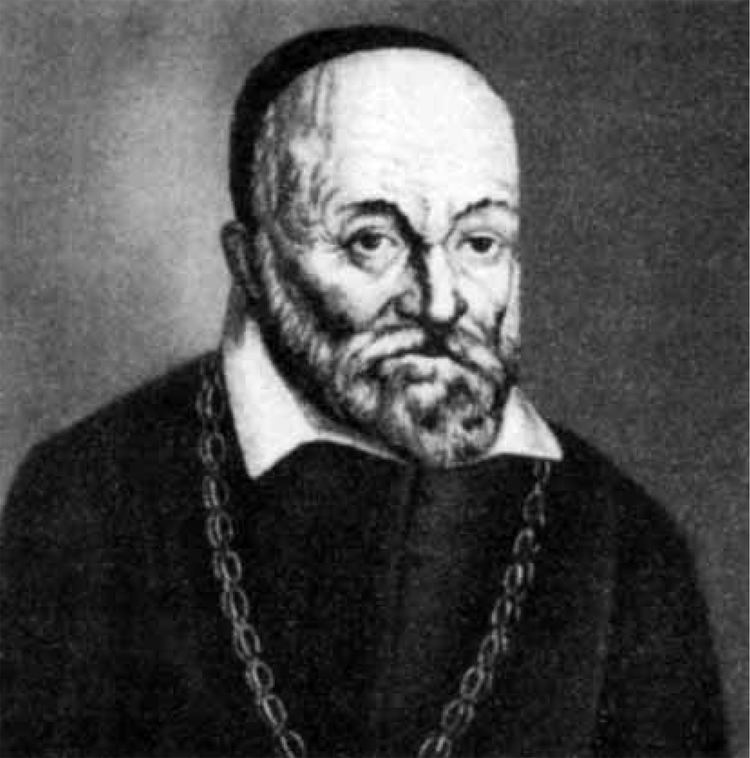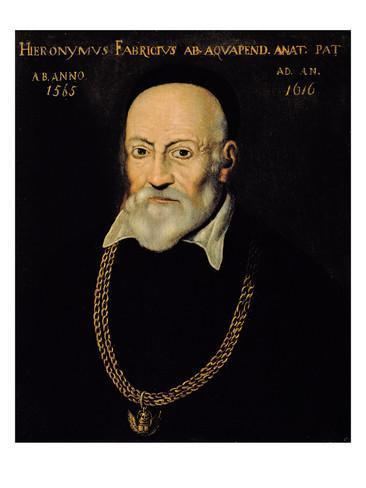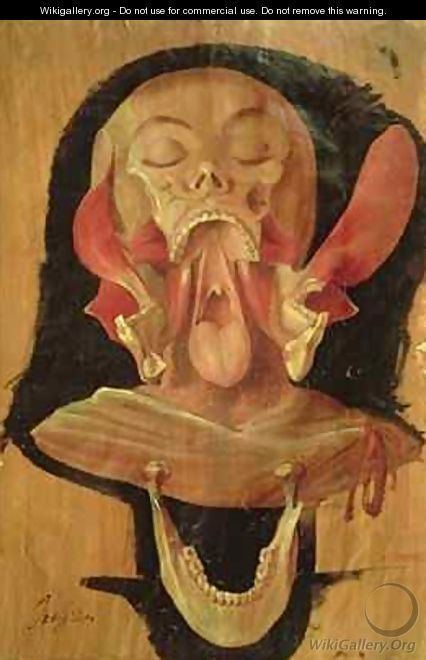Nationality Italian Fields Anatomy | Name Hieronymus Fabricius Books Embryological Treatises | |
 | ||
Doctoral students William HarveyAdriaan van den SpieghelJohannes HeurniusJan JeseniusSalomon Alberti Died May 21, 1619, Padua, Italy Similar People William Harvey, Gabriele Falloppio, Ibn al‑Nafis, Avicenna | ||
Hieronymus Fabricius or Girolamo Fabrizio, known also by his full Latin and Italian names, Fabricus ab Aquapendente or Girolamo Fabrizi d'Acquapendente, (20 May 1537 – 21 May 1619) was a pioneering anatomist and surgeon known in medical science as "The Father of Embryology."
Contents

Life and accomplishments

Born in Acquapendente, Latium, Fabricius studied at the University of Padua, receiving a Doctor of Medicine degree in 1559 under the guidance of Gabriele Falloppio. He was a private teacher of anatomy in Padua, 1562–1565, and in 1565, became professor of surgery and anatomy at the university, succeeding Falloppio.

In 1594 he revolutionized the teaching of anatomy when he designed the first permanent theater for public anatomical dissections. Julius Casserius (1552–1616) of Piacenza was among Fabricius' students. William Harvey (1578–1657) and Adriaan van den Spiegel (1578–1625) also studied under Fabricius, beginning around 1598. Julius Casserius would later succeed Fabricius as Professor of Anatomy at the University of Padua in 1604, and Adriaan van den Spiegel succeeded Casserius in that position in 1615.
By dissecting animals, Fabricius investigated the formation of the fetus, the structure of the esophagus, stomach and intestines, and the peculiarities of the eye, the ear, and the larynx. He was the first to describe the membranous folds that he called "valves" in the interior of veins. These valves are now understood to prevent retrograde flow of blood within the veins, thus facilitating antegrade flow of blood towards the heart, though Fabricius did not understand their role at that time.

In his Tabulae Pictae, first published in 1600, Fabricius described the cerebral fissure separating the temporal lobe from the frontal lobe. However, Fabricius' discovery was not recognized until recently. Instead, Danish anatomist Caspar Bartholin credits Franciscus Sylvius with the discovery, and Bartholin's son Thomas named it the Sylvian fissure in the 1641 edition of the textbook Institutiones anatomicae.

The Bursa of Fabricius (the site of hematopoiesis in birds) is named after Fabricius. A manuscript entitled De Formatione Ovi et Pulli, found among his lecture notes after his death, was published in 1621. It contains the first description of the bursa.

Fabricius contributed much to the field of surgery. Though he never actually performed a tracheotomy, his writings include descriptions of the surgical technique. He favored using a vertical incision and was the first to introduce the idea of a tracheostomy tube. This was a straight, short cannula that incorporated wings to prevent the tube from disappearing into the trachea. He recommended the operation only as a last resort, to be used in cases of airway obstruction by foreign bodies or secretions. Fabricius' description of the tracheotomy procedure is similar to that used today.
Julius Casserius published his own writings regarding technique and equipment for tracheotomy. Casserius recommended using a curved silver tube with several holes in it. Marco Aurelio Severino (1580–1656), a skilful surgeon and anatomist, performed at least one tracheotomy during a diphtheria epidemic in Naples in 1610, using the vertical incision technique recommended by Fabricius.
